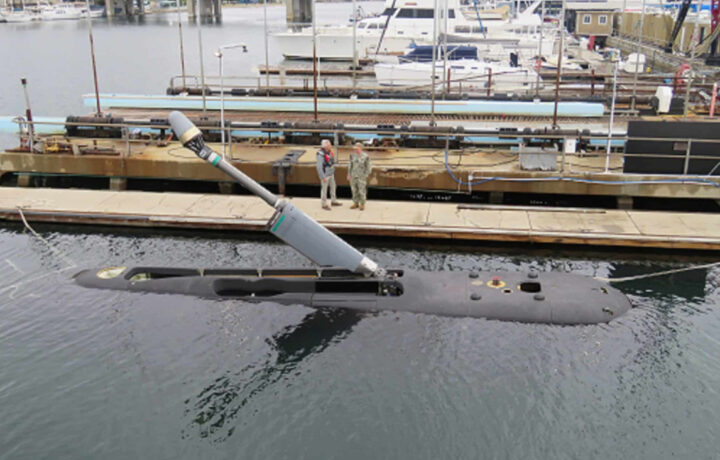The United States military, its allies and partners, and even its adversaries are now developing drones – unmanned platforms that will support, and likely eventually replace manned systems. However, because of the influx of commercial “off-the-shelf” unmanned aerial systems (UAS), there is a misconception that most drones are small and relatively fragile.
That isn’t true with all aerial platforms; some military drones are nearly the size of a fighter plane.
For the United States Navy, drones also come in a variety of shapes and sizes. This includes the Orca Extra Large Uncrewed Undersea Vehicle (XLUUV), which the sea service received from Boeing for testing last December.
“Configured to accommodate various payloads, the Orca XLUUV allows for the seamless integration of sensors, communication systems, and other mission-specific components, adapting to the evolving requirements of naval operations,” Naval Sea Systems Command (NAVSEA) announced at the time of the vehicle’s delivery.
“With its long-endurance capability, the Orca XLUUV can operate autonomously for extended periods. This allows for sustained operational presence and increased mission effectiveness in challenging undersea environments,” NAVSEA added.
A Whale Sized Drone
The description from NAVSEA didn’t do justice in terms of the size of the platform, however. Even photos that were released by Boeing last year failed to provide how large the Orca is – but newly released photos that have made the rounds on LinkedIn this month of the XLUUV with its payload section, highlighting that its name is quite fitting.
The XLUUV is really extra-large in the truest sense, and according to Boeing, the Orca is nearly 51 feet long (15.54 meters) without its payload and 85 feet long (26 meters) with the payload. By comparison, the USS Holland (SS-1), the U.S. Navy’s first modern commissioned submarine, was just 53 feet long (16.18 meters) and had a complement of nine sailors.
The Orca, with its payload module, is not only larger than the SS-1 but is far more capable. It is being developed to serve in a variety of roles, including mine countermeasures, anti-surface warfare (ASuW), anti-submarine warfare (ASW), electronic warfare (EW), and strike missions. The payload pay has the capacity for eight tons of hardware – and additional modules could be developed or refined to suit future roles.
Moreover, unlike USS Holland, it won’t put nine sailors in harm’s way while conducting even routine operations, and it can operate at far greater distances – with a range of 6,000 nautical miles.
The Orca is based on Boeing’s Echo Voyager autonomous XLUUV, which was first unveiled in March 2016, and conducted its initial sea trials in 2017. That submersible can carry our operations for months, as it is equipped with a hybrid rechargeable power system, and it can be launched and recovered without the need for a dedicated support ship.
According to Naval-Technology.com, the Echo Voyager’s navigation systems include Kalman filtered inertial navigation unit (INU), doppler velocity logs (DVLs), depth sensors, and seafloor long baseline (LBL) transponders. The undersea drone is also equipped with GPS to support operations on and near the surface, while encrypted Inmarsat IV, Iridium, Wi-Fi, and FreeWave-enabled communications are used for command, control, and mission re-planning when the XLUUV operates near the surface.
New Drone Unit
The Orca is now one of several undersea drones being tested by the U.S. Navy’s Unmanned Undersea Vehicles Squadron One (UUVRON-1), which was elevated to a submarine force major command in July 2022. The unit was first established in 2017, and as of two years ago expanded its initial footprint from 39 to a staff of more than 100 sailors who oversee the unmanned platforms that can operate in environments not easily accessible to human crews.
Last year, the U.S. Navy further established the Unmanned Undersea Vehicle (UUV) Flotilla Three (UUVFLOT-3) as a subordinate command to UUV Squadron One (UUVRON-1). According to the U.S. Navy, UUVFLOT-3 was established to support ORCA XLUUV’s initial operational testing and evaluation and follow on fielding and employment in support of combatant commander requirements.




